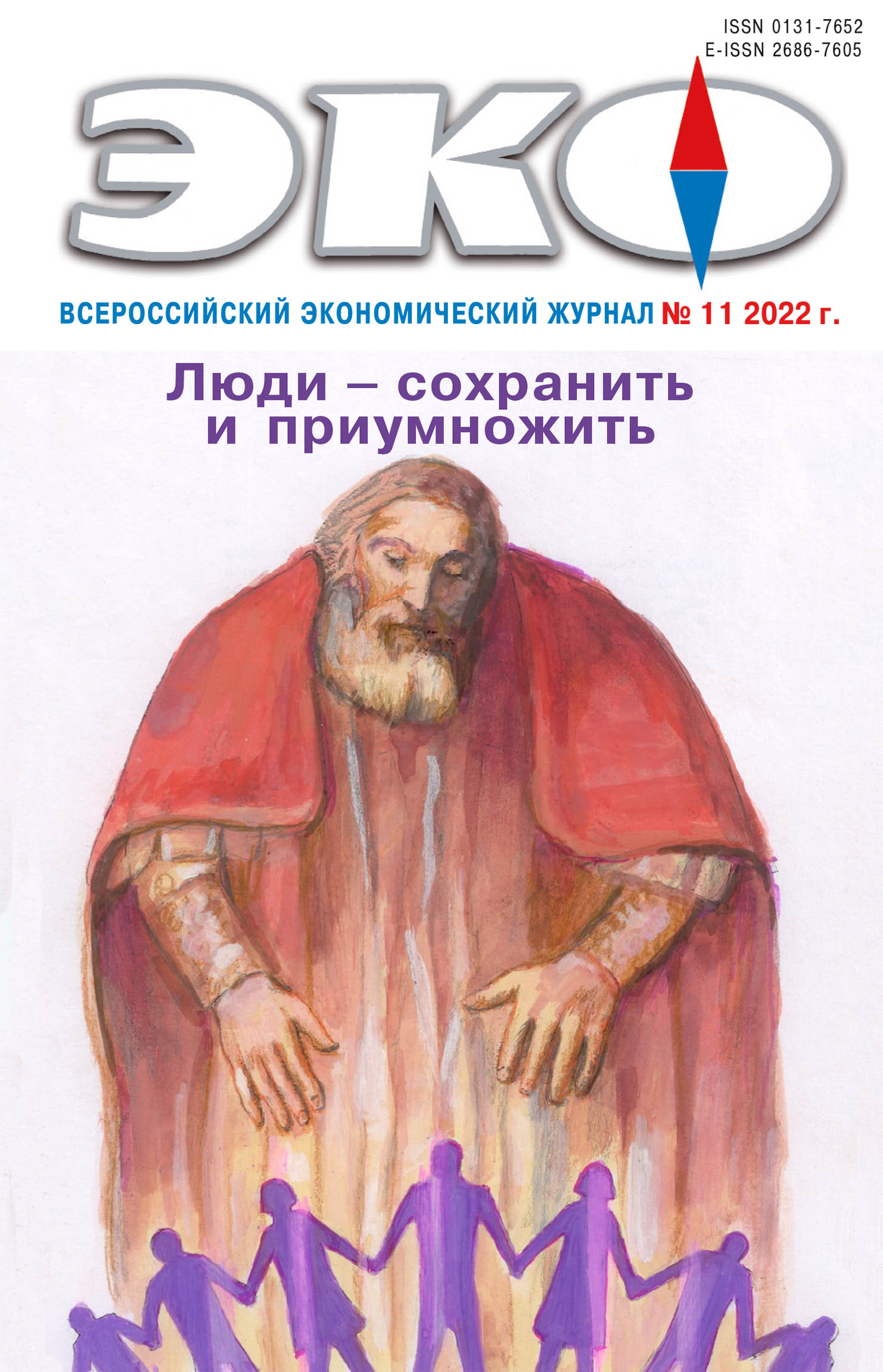People - Preserve and Grow
Human Potential of the Population of the Republic of Buryatia: the Level and Dynamics of Development in the Municipal Sector
Published 2022-11-07
Keywords
- human potential; normalized indices; health; education; demographic component; welfare; socio-cultural activity; municipal formation; Republic of Buryatia
How to Cite
1.
Byuraeva Ю. Human Potential of the Population of the Republic of Buryatia: the Level and Dynamics of Development in the Municipal Sector. ECO [Internet]. 2022 Nov. 7 [cited 2025 Dec. 18];52(11):40-66. Available from: https://ecotrends.ru/index.php/eco/article/view/4529
Abstract
The paper is devoted to the study of the dynamics of human potential of the Republic of Buryatia in the context of municipalities. It includes the components of health, education, well-being, as well as demographic and socio-cultural. The data from 2015 to 2020 were assessed by the index method using alternative indicators. It is based on the typologization of municipalities by the level of human development and the ratio of its components, determining the factors affecting their development. The author reveals trends towards the preservation of territorial heterogeneity of human potential and the increase in the importance of health and education components at the expense of reducing the weight of other components.References
- Абрамян С. И., Федотов А. А. Интегральный индекс человеческого потенциала: региональный анализ // Бизнес. Образование. Право. 2021. № 4 (57). С. 63–69. DOI: 10.25683/VOLBI.2021.57.411
- Атанов Н. И., Янтранов А. Е. Потенциал «зеленого развития» Республики Бурятия // ЭКО. 2015. № 11. С. 111–115.
- Бреславский А. С. Улан-Удэ: масштабы, источники, сегменты и последствия пригородного роста // Что мы знаем о современных российских пригородах?: сб. науч. ст. Улан-Удэ: Изд-во БНЦ СО РАН, 2017. С. 148–159.
- Бюраева Ю. Г. Какая связь между демографическим потенциалом и экономическим развитием Республики Бурятия? // ЭКО. 2019. № 6. С. 124–144. DOI: 10.30680/ЕСО0131-7652-2019-6-124-144
- Бюраева Ю. Г. Миграционные процессы в Республике Бурятия: направления, результативность, факторы // ЭКО. 2022. № 1. С. 141–166. DOI: 10.30680/ECO0131-7652-2022-1-141-166
- Валеева О. В. Методика расчета индекса развития человеческого потенциала в муниципальных образованиях (на примере Забайкальского края и Республики Бурятия) // Вестник ЗабГУ. 2016. Т. 22. № 7. С. 91–99.
- Мигранова Л. А., Токсанбаева М. С. Человеческий потенциал российских регионов: уровень и динамика развития (часть первая) // Уровень жизни населения регионов России. 2018. № 2. С. 47–59. DOI: 10.24411/1999–9836–2018–10014
- Римашевская Н. М., Бочкарева В. К., Мигранова Л. А. Молчанова Е. В. Токсанбаева М. С. Человеческий потенциал российских регионов // Народонаселение. 2013. № 3. С. 82–141.
- Рюмина Е. В. Экологически скорректированный индекс человеческого развития // Народонаселение. 2020. Т. 23. № 1. С. 4–12. DOI: 10.19181/population.2020.23.1
- Соболева И. В. Человеческий потенциал российской экономики: проблемы сохранения и развития. М.: Наука, 2007. 202 с.
- Ушакова Т. Н., Зыкова Н. В., Иконникова О. В. Мониторинг развития человеческого потенциала в муниципальных образованиях (на примере Архангельской области) // Проблемы современной экономики. 2018. № 4 (68). С. 175–178.

